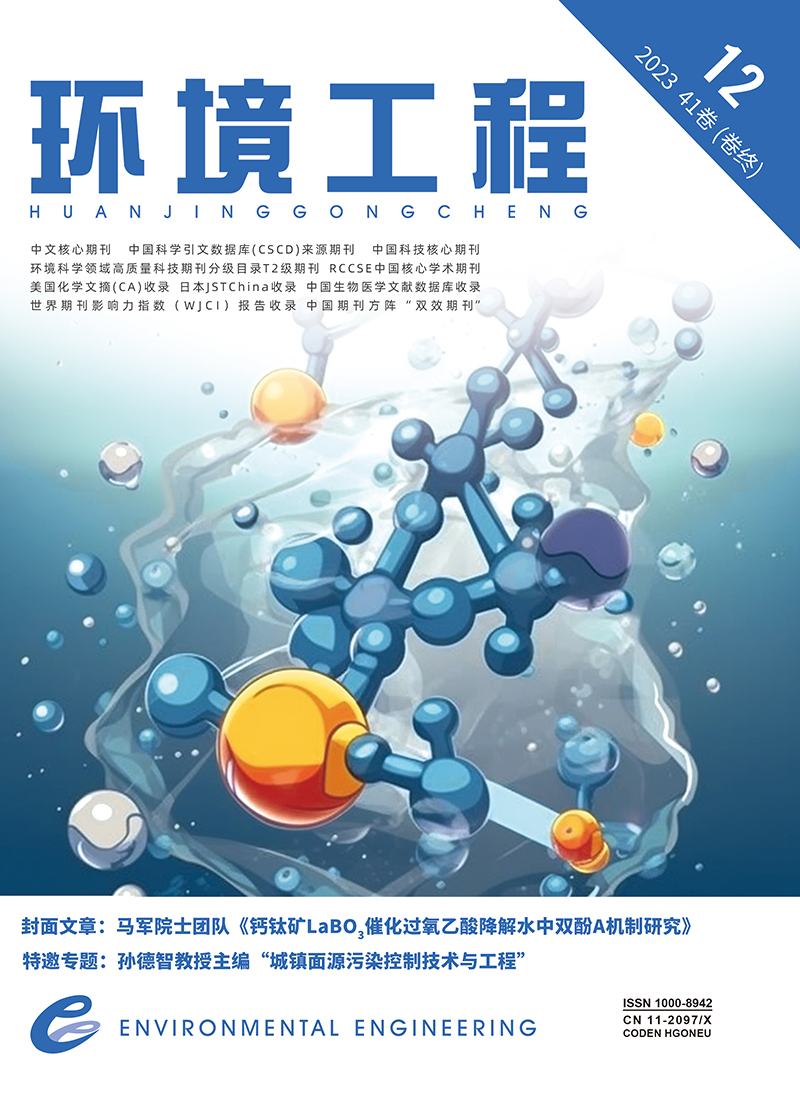| [1] |
KONG Z, SHAO Z, SHEN Y, et al. Comprehensive evaluation of stormwater pollutants characteristics, purification process and environmental impact after low impact development practices[J]. Journal of Cleaner Production, 2021, 278.
|
| [2] |
LI L, DAVIS A P. Urban stormwater runoff nitrogen composition and fate in bioretention systems[J]. Environ Sci Technol, 2014, 48(6): 3403-3410.
|
| [3] |
KONG Z, SONG Y, SHAO Z, et al. Biochar-pyrite bi-layer bioretention system for dissolved nutrient treatment and by-product generation control under various stormwater conditions[J]. Water Res, 2021, 206: 117737.
|
| [4] |
TIAN J, JIN J, CHIU P C, et al. A pilot-scale, bi-layer bioretention system with biochar and zero-valent iron for enhanced nitrate removal from stormwater[J]. Water Res, 2019, 148: 378-387.
|
| [5] |
DONAGHUE A G, MORGAN N, TORAN L, et al. The impact of bioretention column internal water storage underdrain height on denitrification under continuous and transient flow[J]. Water Res, 2022, 214: 118205.
|
| [6] |
仇付国, 代一帆, 付昆明, 等. 生物滞留系统设置内部淹没区对径流污染物去除的影响[J]. 环境工程, 2017, 35(7): 7-12.
|
| [7] |
CHEN Y, SHAO Z, KONG Z, et al. Study of pyrite based autotrophic denitrification system for low-carbon source stormwater treatment[J]. Journal of Water Process Engineering, 2020, 37.
|
| [8] |
李立青, 胡楠, 刘雨情, 等. 3种生物滞留设计对城市地表径流溶解性氮的去除作用[J]. 环境科学, 2017, 38(5): 1881-1888.
|
| [9] |
YOU Z, ZHANG L, PAN S Y, et al. Performance evaluation of modified bioretention systems with alkaline solid wastes for enhanced nutrient removal from stormwater runoff[J]. Water Res, 2019, 161: 61-73.
|
| [10] |
LI R, FENG C, HU W, et al. Woodchip-sulfur based heterotrophic and autotrophic denitrification (WSHAD) process for nitrate contaminated water remediation[J]. Water Res, 2016, 89: 171-179.
|
| [11] |
孟依柯, 王媛, 汪传跃, 等. 降雨径流中玉米芯营养素淋出及吸附特性[J]. 水资源保护, 2022, 38(6): 138-145.
|
| [12] |
BELLER H R. Anaerobic, nitrate-dependent oxidation of U(IV) oxide minerals by the chemolithoautotrophic bacterium Thiobacillus denitrificans[J]. Appl Environ Microbiol, 2005, 71(4): 2170-2174.
|
| [13] |
SUN X, YE Y, MA Q, et al. Variation in enzyme activities involved in carbon and nitrogen cycling in rhizosphere and bulk soil after organic mulching[J]. Rhizosphere, 2021, 19.
|
| [14] |
CHAI H, MA J, MA H, et al. Enhanced nutrient removal of agricultural waste-pyrite bioretention system for stormwater pollution treatment[J]. Journal of Cleaner Production, 2023, 395.
|
| [15] |
柴宏祥, 陈一凡, 邵知宇, 等. 硫铁矿基质生物滞留系统对雨水径流的处理效能[J]. 中国给水排水, 2022, 38(3): 112-117.
|
| [16] |
YANG X L, JIANG Q, SONG H L, et al. Selection and application of agricultural wastes as solid carbon sources and biofilm carriers in MBR[J]. Journal of Hazardous Materials, 2015, 283: 186-192.
|
| [17] |
LI J, DAVIS A P. A unified look at phosphorus treatment using bioretention[J]. Water Research, 2016, 90: 141-155.
|
| [18] |
WENG Z, MA H, MA J, et al. Corncob-pyrite bioretention system for enhanced dissolved nutrient treatment: carbon source release and mixotrophic denitrification[J]. Chemosphere, 2022, 306: 135534.
|
| [19] |
KONG Z, MA H, SONG Y, et al. A long term study elucidates the relationship between media amendment and pollutant treatment in the stormwater bioretention system: stability or efficiency?[J]. Water Research, 2022, 225.
|
| [20] |
DENG Q, WAN L, LI X, et al. Metagenomic evidence reveals denitrifying community diversity rather than abundance drives nitrate removal in stormwater biofilters amended with different organic and inorganic electron donors[J]. Chemosphere, 2020, 257: 127269.
|
| [21] |
LI Y, GUO J, LI H, et al. Effect of dissolved oxygen on simultaneous removal of ammonia, nitrate and phosphorus via biological aerated filter with sulfur and pyrite as composite fillers[J]. Bioresour Technol, 2020, 296: 122340.
|
| [22] |
MORSE N, PAYNE E, HENRY R, et al. Plant-microbe interactions drive denitrification rates, dissolved nitrogen removal, and the abundance of denitrification genes in stormwater control measures[J]. Environ Sci Technol, 2018, 52(16): 9320-9329.
|
| [23] |
LIU L, WANG F, XU S, et al. Woodchips bioretention column for stormwater treatment: nitrogen removal performance, carbon source and microbial community analysis[J]. Chemosphere, 2021, 285: 131519.
|


 Login
Login Register
Register E-alert
E-alert






 DownLoad:
DownLoad: